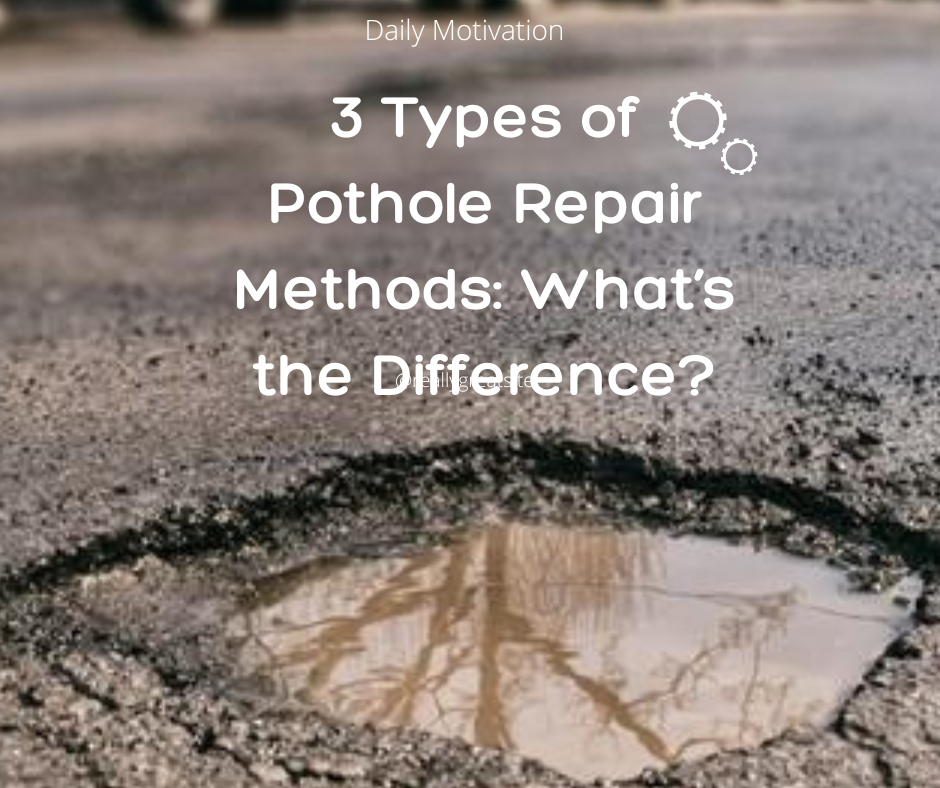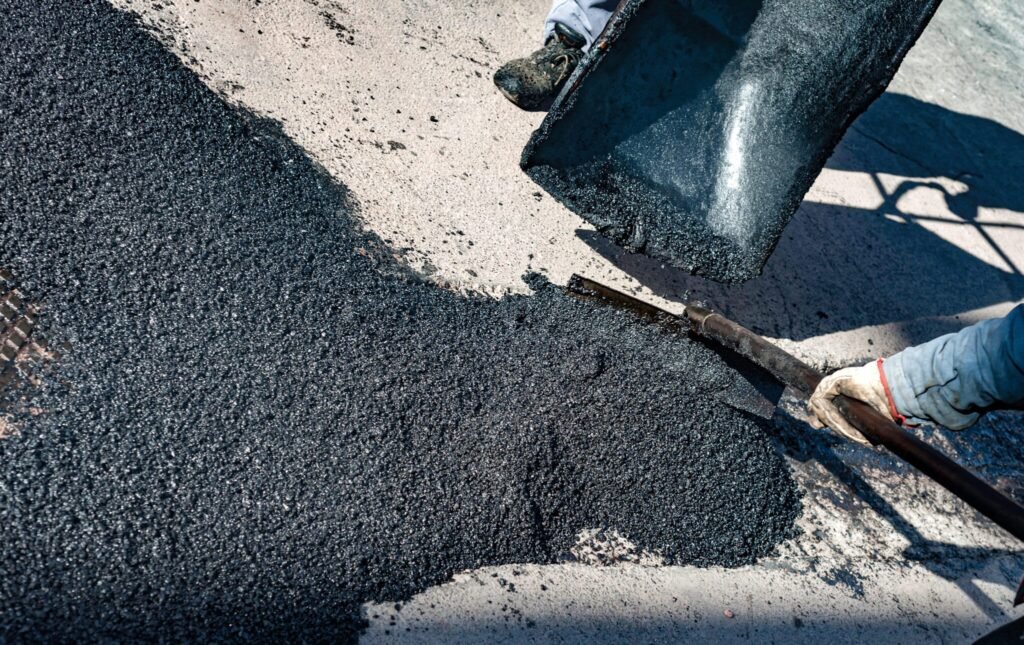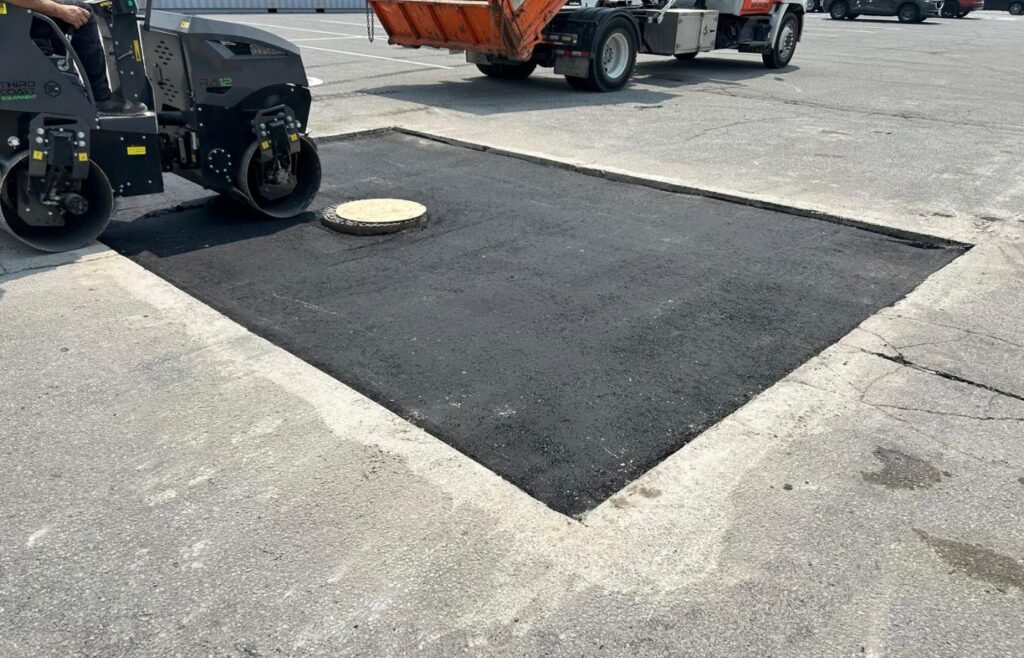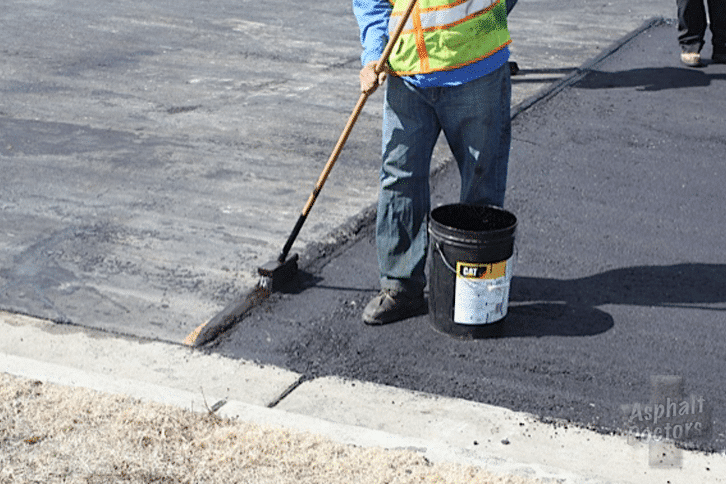Potholes might seem like a minor issue, but they can lead to big problems.
It becomes a big problem for drivers and property owners.
If left unrepaired, potholes pose safety risks, damage vehicles, and allow water to seep into the pavement base, weakening it even further.
Let’s talk about pothole solutions. No matter if you’re maintaining a commercial lot, residential road, or private driveway, it’s important to protect your investment and avoid costly repairs down the road.
There’s no one-size-fits-all approach to fixing any pothole patching. The best method varies based on multiple factors, including weather conditions, budget, and the amount of traffic the surface handles.

3 Methods for Pothole Repairs
Before further ado, let’s find below the types of potholes and solutions to repair them through different methods.
1. Cold Pothole Patching
Cold patch repairs are a quick, common, temporary, and cost-effective solution.
Cold patch repair involves pre-mixed asphalt directly into the pothole without heating. It is an effective method during the colder or rainy season.
The most significant advantage of cold patch repairs is convenience. It’s the go-to choice for a quick pothole fix when immediate action is needed.
The only drawback is that it’s not a permanent solution. It’s an effective way to reduce safety hazards and vehicle damage until more durable repairs can be made.

If you need an instant pothole repair, our team can help with quick solutions that fit your budget.
2. Hot Mix Asphalt Repairs
Curious to know how to fix potholes permanently?
The most durable and long-lasting solution option is the hot mix asphalt, which is the gold standard in permanent pothole repair.
It involves heating asphalt to high temperatures and compacting it into the pothole after properly cleaning the area.
This repair technique creates a strong bond with the surrounding pavement. Makes it ideal for high-traffic areas like commercial lots and busy roads. This method is effective for residential and municipal settings, too.
This method is best in summer and spring because it requires warm temperatures and special equipment, but the results are worth the wait.

Looking for a long-lasting fix? Hot mix asphalt is the go-to for permanent pothole repair.
3. Full-Depth Patching
Full-depth patching is the most comprehensive approach to pothole repair. It involves cutting and removing the damaged pavement. Repairing or replacing the base layers and installing new asphalt from the ground up.
Full-depth method increases the pothole repair durability; it may seem labor-intensive, but it’s incredibly cost-effective in the long term.
First, consider the underlying issues, then go for full-depth patching to prevent recurring potholes and extend the life of your pavement. It’s especially valuable for older or heavily deteriorated surfaces.
The durability makes it a smart choice for businesses, parking lots, and areas with chronic pothole issues.
For businesses and busy lots, full-depth patching offers cost-effective durability that lasts for years.

For businesses and busy lots, full-depth patching offers cost-effective durability that lasts for years.
Other Pothole Repair Methods – Spray-Injection, Infrared & More
You know, there are more methods to repair potholes than the ones mentioned above. Identify other solutions worth trying. Each of these pothole patching options has its place depending on the surface condition and repair goals.
- Spray-injection patchingseals the pothole edges by spraying a mixture of asphalt and aggregate. It’s quick, long-lasting, and ideal for road maintenance crews.
- Throw-and-go/ throw-and-roll is a budget-friendly method, where cold mix is poured into the pothole and compacted. It is best to pull out in emergencies or winter.
- Infrared pothole repairuses infrared heat to soften existing asphalt. That blends with the new material smoothly. This method is eco-friendly and leaves a fine finish.
- Mill patching, also known as dig-out patching, removes and replaces a larger area of damaged pavement. It’s a great option when potholes are part of a more widespread issue.
How to Choose the Right Pothole Repair Method for Your Pavement
Choosing the right pothole repair method comes down to a few key factors:
- First, check if the damage is surface-level or if deeper structural issues are present.
- Then check for heavily used areas that need more durable repair options.
- Temporary fixes may cost less upfront, while permanent repairs offer long-term savings.
- Some methods require dry, warm weather; others work in all conditions.
Don’t wait until potholes cause damage; get a free estimate today and restore your pavement’s safety and curb appeal.

